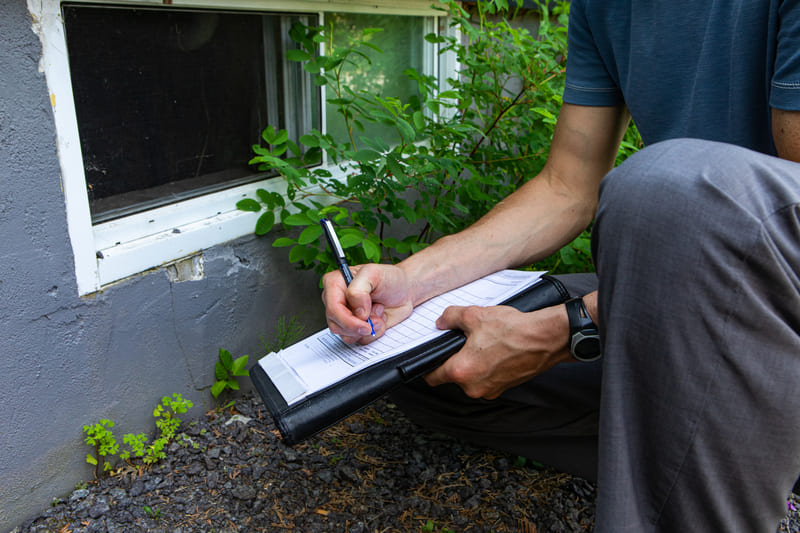
AirMD Mold Inspection

Mold inspection is a process carried out to assess the presence of mold in indoor environments and identify any underlying moisture issues contributing to mold growth. Here’s a general overview of what’s involved in a mold inspection:
Visual Inspection
The inspector conducts a thorough visual examination of the property, looking for visible signs of mold growth, water damage, and areas with high humidity or moisture problems. This includes inspecting walls, ceilings, floors, windows, plumbing fixtures, HVAC systems, and other areas where mold commonly thrives.
Moisture Detection
Since mold requires moisture to grow, detecting and identifying sources of moisture is crucial during a mold inspection. Various tools may be used for moisture detection, including moisture meters, thermal imaging cameras, and hygrometers. These tools help identify areas of high humidity or dampness that may be conducive to mold growth.
Air Sampling
In some cases, air sampling may be conducted to assess the indoor air quality and measure the concentration of mold spores in the air. Air samples are collected using specialized equipment, such as air pumps and spore traps, and sent to a laboratory for analysis. Air sampling can help determine the extent of mold contamination and identify specific types of mold present in the indoor environment.
Surface Sampling
Surface sampling involves collecting samples from suspected mold growth areas using techniques like tape lift sampling, swab sampling, or bulk sampling. These samples are also sent to a laboratory for analysis to identify the types of mold present and assess the severity of contamination.
HVAC System Inspection
Since mold can colonize in HVAC systems and spread throughout a building, inspectors also examine heating, ventilation, and air conditioning systems for signs of mold growth. This includes inspecting air ducts, filters, coils, and drip pans for mold contamination.
Documentation and Reporting
The inspector documents their findings, including observations, measurements, sampling results, and recommendations for remediation if mold is detected. A comprehensive inspection report is then provided to the property owner or manager, outlining the extent of mold contamination and outlining steps for remediation and moisture control.
Overall, mold inspection is a critical step in identifying and addressing mold problems in indoor environments, helping to improve indoor air quality and prevent potential health hazards associated with mold exposure. It’s often recommended to hire a qualified mold inspector or remediation professional to conduct thorough mold inspections and ensure proper remediation measures are taken if mold is found.






